Instruction
How to plan your escape when faced with trouble
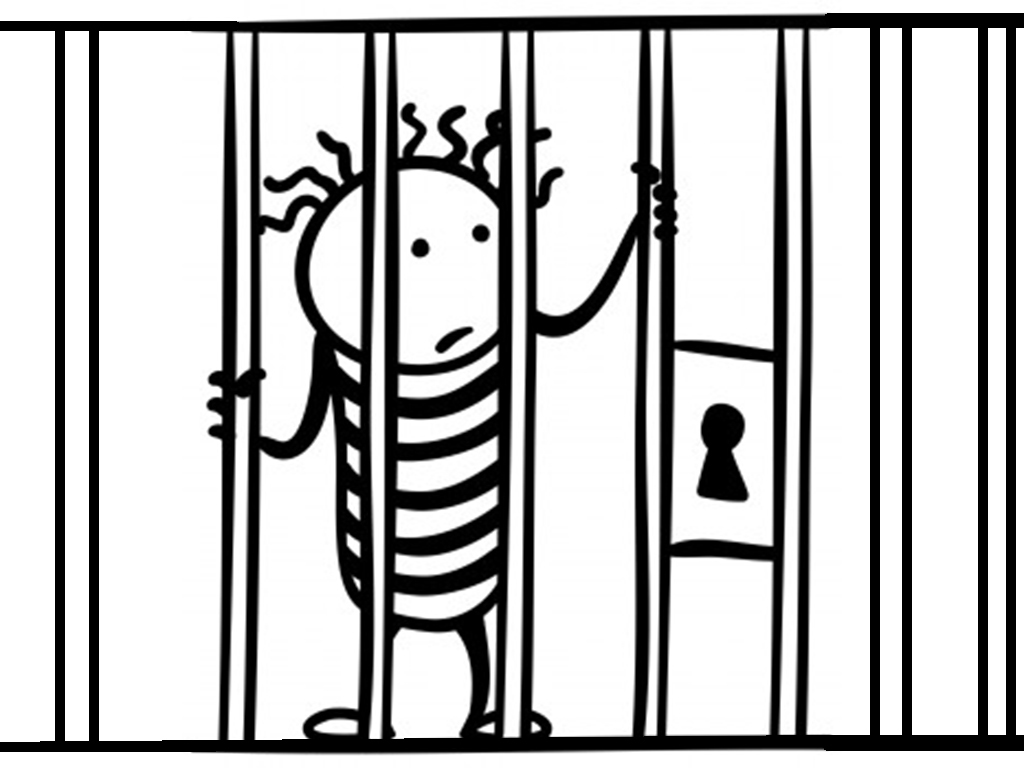
The average 18-hole score for amateurs continues to stay near 100 for numerous reasons. One thing that shouldn’t be getting in the way? Decision making. Amateur golfers seem to make the incorrect decisions time and time again. I’ve conducted numerous golf schools, clinics and hundreds of playing lessons, and I continue to see the same mistakes.
Let’s use trouble shots for example. Most often I see amateur golfers make poor decisions when trying to get out of trouble. They most often choose the incorrect escape plan by either choosing the wrong club, the wrong route and/or the wrong type of shot.
Let’s go further and use the punch shot from the trees as an example. Most amateurs would select the wrong route, with a club that has too much loft and execute the wrong type of swing.
Look at the picture below. How do you go about choosing the correct escape plan?
The first thing you have to do is choose a route. From the looks of this situation, the shot must be focused around a low trajectory. You have to eliminate any possibility or thought about hitting a lofted shot because there is only trouble in the air.
You can see I have shown three different options. I think it’s imperative to look at three options and choose the best/smartest one.
Option 1: Conservative, but smart. Branches are higher and trees are farther apart, which means there’s less of a chance to “connect with wood.” The only downfall to this option is that you may actually lose yardage rather than move the ball toward the hole.
Option 2: Slightly more risky. This one is more of a gamble than the first option due to the low-hanging trees, but you can pick up some distance. There is also a wider area of fairway available.
Option 3: Both risky and aggressive. There’s a very narrow gap to hit through with the lowest over-hanging branches. You can pick up the most yardage, but this shot could also be the most problematic.
Let’s choose Option 2, as it allows you to gain some yardage, but guarantees a clear view at the hole for your next shot.
Next, you must choose the correct club to hit along with the proper swing to make. Since we know that the goal is to hit a low-trajectory shot, we can eliminate all options between the lob wedge and 6 iron. For most of us that means we are left with a 5 iron and a 4 iron. You can use either. Now, in order to hit a low shot, you must set up correctly and make the appropriate swing.
Here’s how to do it
1. Place your feet closer together with the ball centered to slightly back in stance.
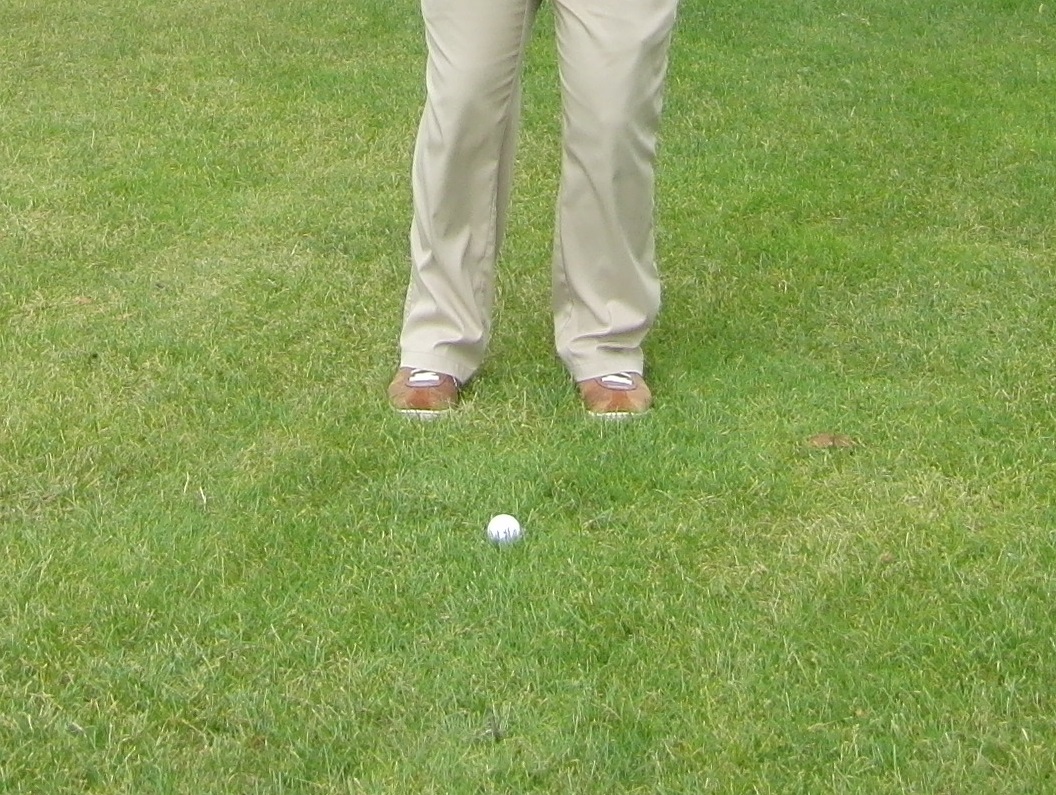
2. Choke down on the club an inch or two for control.
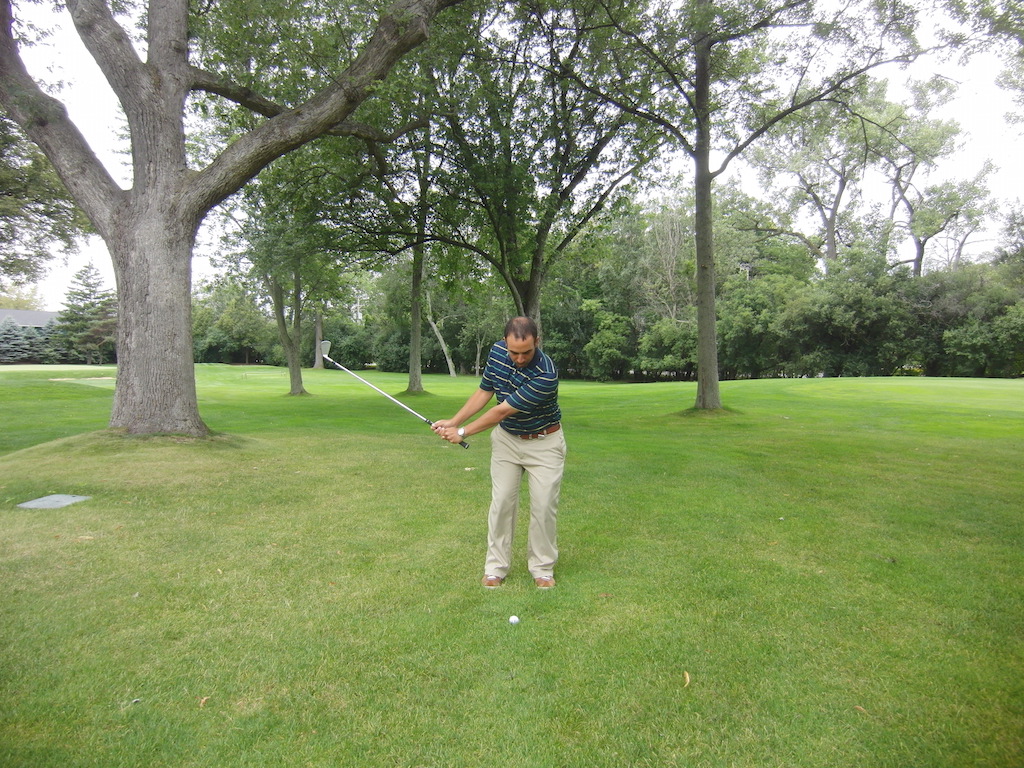
3. Take a half swing with a low follow through.
Now that you know what to do, swing away with some confidence and get the ball back into play!
So let’s review. Next time you find yourself in a difficult situation, follow these steps below to come up with your own escape plan:
- Determine your options and possible trajectories of the ball flight.
- Choose the option that allows you to advance the ball forward, but guarantees a clear view at the hole for your next shot.
- Choose the appropriate club to hit the intended shot. Don’t use a lofted club to hit a low shot. I promise it won’t work.
- Set up correctly to hit the anticipated shot.
- Make the correct swing. Don’t always take a full swing, and control the length of your swing for different types of shots.
- LIKE64
- LEGIT8
- WOW1
- LOL2
- IDHT1
- FLOP5
- OB1
- SHANK6
Instruction
Clement: Laid-off or perfect fade? Across-the-line or perfect draw?

Some call the image on the left laid off, but if you are hitting a fade, this could be a perfect backswing for it! Same for across the line for a draw! Stop racking your brain with perceived mistakes and simply match backswing to shot shape!
- LIKE0
- LEGIT0
- WOW0
- LOL0
- IDHT0
- FLOP0
- OB0
- SHANK0
Instruction
The Wedge Guy: The easiest-to-learn golf basic

My golf learning began with this simple fact – if you don’t have a fundamentally sound hold on the golf club, it is practically impossible for your body to execute a fundamentally sound golf swing. I’m still a big believer that the golf swing is much easier to execute if you begin with the proper hold on the club.
As you might imagine, I come into contact with hundreds of golfers of all skill levels. And it is very rare to see a good player with a bad hold on the golf club. There are some exceptions, for sure, but they are very few and very far between, and they typically have beat so many balls with their poor grip that they’ve found a way to work around it.
The reality of biophysics is that the body moves only in certain ways – and the particulars of the way you hold the golf club can totally prevent a sound swing motion that allows the club to release properly through the impact zone. The wonderful thing is that anyone can learn how to put a fundamentally sound hold on the golf club, and you can practice it anywhere your hands are not otherwise engaged, like watching TV or just sitting and relaxing.
Whether you prefer an overlap, interlock or full-finger (not baseball!) grip on the club, the same fundamentals apply. Here are the major grip faults I see most often, in the order of the frequency:
Mis-aligned hands
By this I mean that the palms of the two hands are not parallel to each other. Too many golfers have a weak left hand and strong right, or vice versa. The easiest way to learn how to hold the club with your palms aligned properly is to grip a plain wooden ruler or yardstick. It forces the hands to align properly and shows you how that feels. If you grip and re-grip a yardstick several times, then grip a club, you’ll see that the learning curve is almost immediate.
The position of the grip in the upper/left hand
I also observe many golfers who have the butt of the grip too far into the heel pad of the upper hand (the left hand for right-handed players). It’s amazing how much easier it is to release the club through the ball if even 1/4-1/2″ of the butt is beyond the left heel pad. Try this yourself to see what I mean. Swing the club freely with just your left hand and notice the difference in its release from when you hold it at the end of the grip, versus gripping down even a half inch.
To help you really understand how this works, go to the range and hit shots with your five-iron gripped down a full inch to make the club the same length as your seven-iron. You will probably see an amazing shot shape difference, and likely not see as much distance loss as you would expect.
Too much lower (right) hand on the club
It seems like almost all golfers of 8-10 handicap or higher have the club too far into the palm of the lower hand, because that feels “good” if you are trying to control the path of the clubhead to the ball. But the golf swing is not an effort to hit at the ball – it is a swing of the club. The proper hold on the club has the grip underneath the pad at the base of the fingers. This will likely feel “weak” to you — like you cannot control the club like that. EXACTLY. You should not be trying to control the club with your lower/master hand.
Gripping too tightly
Nearly all golfers hold the club too tightly, which tenses up the forearms and prevents a proper release of the club through impact. In order for the club to move back and through properly, you must feel that the club is controlled by the last three fingers of the upper hand, and the middle two fingers of the lower hand. If you engage your thumbs and forefingers in “holding” the club, the result will almost always be a grip that is too tight. Try this for yourself. Hold the club in your upper hand only, and squeeze firmly with just the last three fingers, with the forefinger and thumb off the club entirely. You have good control, but your forearms are not tense. Then begin to squeeze down with your thumb and forefinger and observe the tensing of the entire forearm. This is the way we are made, so the key to preventing tenseness in the arms is to hold the club very lightly with the “pinchers” — the thumbs and forefingers.
So, those are what I believe are the four fundamentals of a good grip. Anyone can learn them in their home or office very quickly. There is no easier way to improve your ball striking consistency and add distance than giving more attention to the way you hold the golf club.
More from the Wedge Guy
- The Wedge Guy: Golf mastery begins with your wedge game
- The Wedge Guy: Why golf is 20 times harder than brain surgery
- The Wedge Guy: Musings on the golf ball rollback
- LIKE86
- LEGIT13
- WOW6
- LOL1
- IDHT0
- FLOP4
- OB1
- SHANK8
Instruction
Clement: Stop ripping off your swing with this drill!

Not the dreaded headcover under the armpit drill! As if your body is defective and can’t function by itself! Have you seen how incredible the human machine is with all the incredible feats of agility all kinds of athletes are accomplishing? You think your body is so defective (the good Lord is laughing his head off at you) that it needs a headcover tucked under the armpit so you can swing like T-Rex?
- LIKE0
- LEGIT2
- WOW2
- LOL0
- IDHT0
- FLOP0
- OB0
- SHANK2
-

 19th Hole2 weeks ago
19th Hole2 weeks agoDave Portnoy places monstrous outright bet for the 2024 Masters
-

 19th Hole3 days ago
19th Hole3 days agoJustin Thomas on the equipment choice of Scottie Scheffler that he thinks is ‘weird’
-

 19th Hole2 weeks ago
19th Hole2 weeks agoTiger Woods arrives at 2024 Masters equipped with a putter that may surprise you
-

 19th Hole3 days ago
19th Hole3 days ago‘Absolutely crazy’ – Major champ lays into Patrick Cantlay over his decision on final hole of RBC Heritage
-

 19th Hole3 weeks ago
19th Hole3 weeks agoReport: Tiger Woods has ‘eliminated sex’ in preparation for the 2024 Masters
-

 19th Hole1 week ago
19th Hole1 week agoTwo star names reportedly blanked Jon Rahm all week at the Masters
-

 19th Hole1 week ago
19th Hole1 week agoReport: LIV Golf identifies latest star name they hope to sign to breakaway tour
-

 19th Hole1 week ago
19th Hole1 week agoNeal Shipley presser ends in awkward fashion after reporter claims Tiger handed him note on 8th fairway

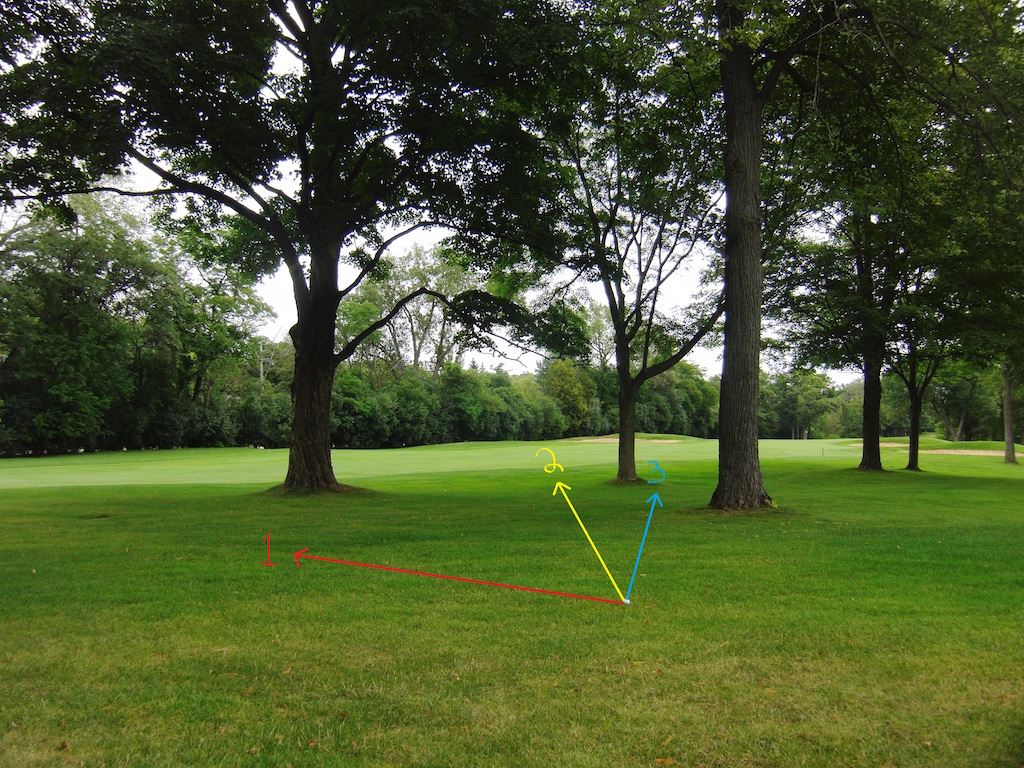
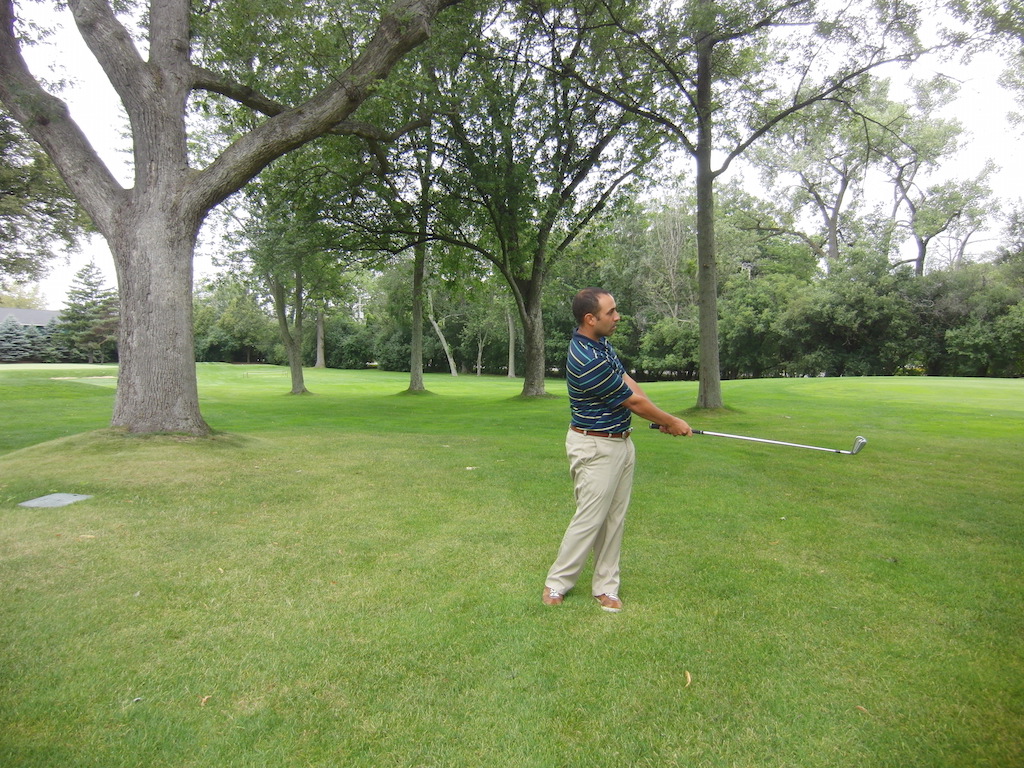














Robert
Nov 19, 2015 at 2:26 am
Option 4 draw the ball around the tree to right of action 3 – reward for semi risky shot is ball on green
Tim
Nov 20, 2015 at 12:56 pm
Lol. A low cut through #3 is much less risky than a draw right of the tree that’s right of #3. There is more room to pull it off, and if you don’t and hit the tree or end up too far right, the ball is in a more playable spot. If you try the draw route, you have to be perfect. If you pull it, you hit the first tree. If you push it or don’t get enough curve on it (most likely scenario out of the rough) you hit the second one. Either way, your next shot is in an even worse spot than this one. Hello, snowman.
Paperboy
Nov 18, 2015 at 1:11 pm
what about a choked up driver – short back swing and “force it” forward…usually enough loft to escape grass and low enough to avoid branches. Has worked for me
Myron miller
Nov 18, 2015 at 9:12 am
Overall basically good ideas, but one factor is overlooked. How much area from the edge of the rough to the other side of the fairway rough (and what is in that rough over there). Hitting a full half swing 4 iron could easily run thru the fairway and into trouble on the other side. And the whole idea here is to whatever else, get the ball into the fairway without going into the rough on the other side.
As KK mentioned one other major option here is the little pitch punch (7-pw) that one uses about 10-30 yards from the green. A little bump and run shot but just a little harder to carry the ball a little further will work also as well as a 4 iron. The issues on which is the distance to the fairway and the distance across the fairway to the rough/trouble on the other side.
I’ve used both very successfully over the years. I grew up in the Seattle area and learned about hitting the ball out of the trees very well since i was in them constantly. I developed a little punch 3-iron shot that now i use a 4-iron for (no longer carry 3-iron) that i could hit anywhere from 30 yards to about 150.
Nowadays lots of times I’ll use anything from 6 iron to pw to punch out if i need low shot and only have a short distance to get out. 4 iron is used for longer shots. I’ve learned to be careful with the 4 iron as i’ve run thru the fairway too many times and put myself in bad position on the other side. Super hard fairways that roll well are real problems for low 4 irons.
Chris Ardolina
Dec 14, 2015 at 3:21 pm
Myron- good point about the space between the edge of the trees and the opposite side of the fairway, where the bunker lies. Just because you take a half length swing doesn’t mean you have to go full force or maximum effort. This is a controlled trouble shot.
To your point about the pitch shot with a a 7-pw, the idea is good for a better player, but from my experience higher handicaps aren’t able to keep the ball low enough with a club that has that much loft. Therefore, they wind up hitting the branches and remain in trouble.
Thanks for reading and sharing. Stay tune for more to come.
-chris
FC
Nov 16, 2015 at 12:00 pm
Good basic instructions for the high handicapper. I often see them hitting full swings which propels the ball straight into the trees when faced with such situations and they have no idea how to hit a low punch shot to get out of the trouble. I deliberately hit the ball thin if the branches are exceptionally low hanging and chase the ball up the fairway.
Chris Ardolina
Dec 14, 2015 at 3:22 pm
Thanks for reading and sharing with us!
KK
Nov 15, 2015 at 1:39 pm
Good article but I have to disagree with the club choice. #2 looks like maybe 30-40 yds to the right edge of the fairway. I can easily hit a low chip with a slightly delofted 7 or 8 iron and get under those branches. Trying to do the same with a 5 or 4 iron would have me shaking in my cleats because of the decreased control with the longer shafts and longer runout.
Chris Ardolina
Dec 14, 2015 at 3:26 pm
Kk- for a more skilled player to de-lofting the club is much easier, but for a high handicap it is difficult. Most high handicappers add loft at Impact, so it is improtant for them to use something with less loft to keep the ball lower.
Thanks for reading!